Staggering bushfire report reveals government's 'horrifying' effort to save wildlife
As Australia looks down the barrel of another bushfire season, wildlife advocates have described the low number of animals treated by the Victorian government last summer as “horrifying”.
Official figures reveal a surprisingly small amount of native animals received medical treatment from the state during last season’s bushfires which burnt 1.5 million hectares of bushland in Victoria.
The numbers, provided by the Department of Environment (DELWP) reveal just 272 native animals were given veterinary care by the government’s four official triage units in Victoria.
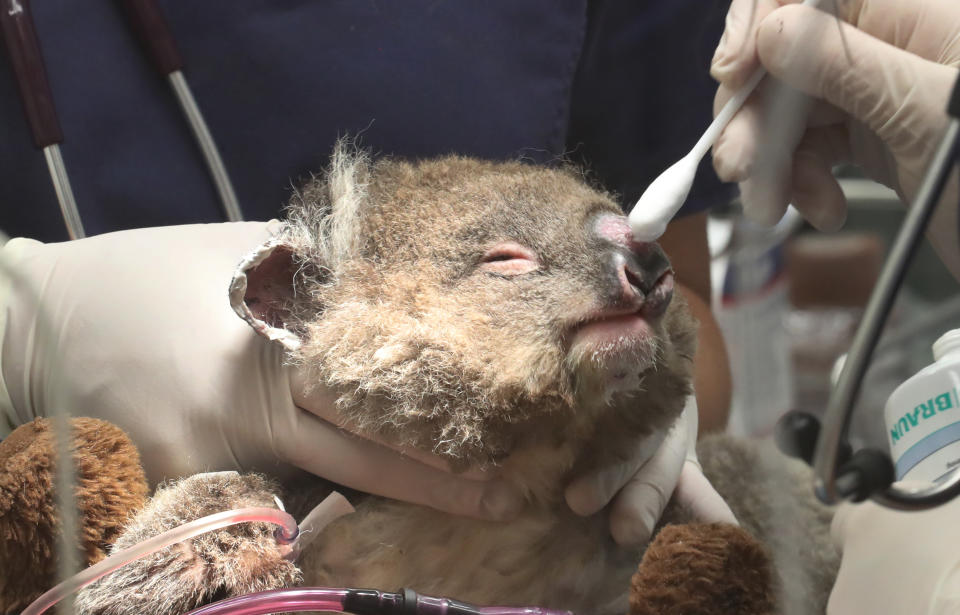
In total, DELWP wildlife teams assessed 2087 animals for injury or abnormal behaviour in the fire zone, over a period of 560 work days in 70 areas.
The department also made nine arial food drops, with seven of them in East Gippsland and two in the North East Victoria.
Amid the horrific conditions Victoria’s wildlife faced last summer, registered animal shelter operators say they stood ready to assist, but the animals “just never came”.
Now many of these volunteers are demanding answers as to why.
‘Ridiculous’: Volunteers prevented from assisting wildlife
Of all species, koalas made up the majority of those that received treatment, accounting for 76.8 per cent of the 272 animals brought into care.
Other wildlife was listed in categories as opposed to species, with birds accounting for 7.4 per cent, possums and gliders 5.1 per cent, and kangaroos just 3.7 per cent.
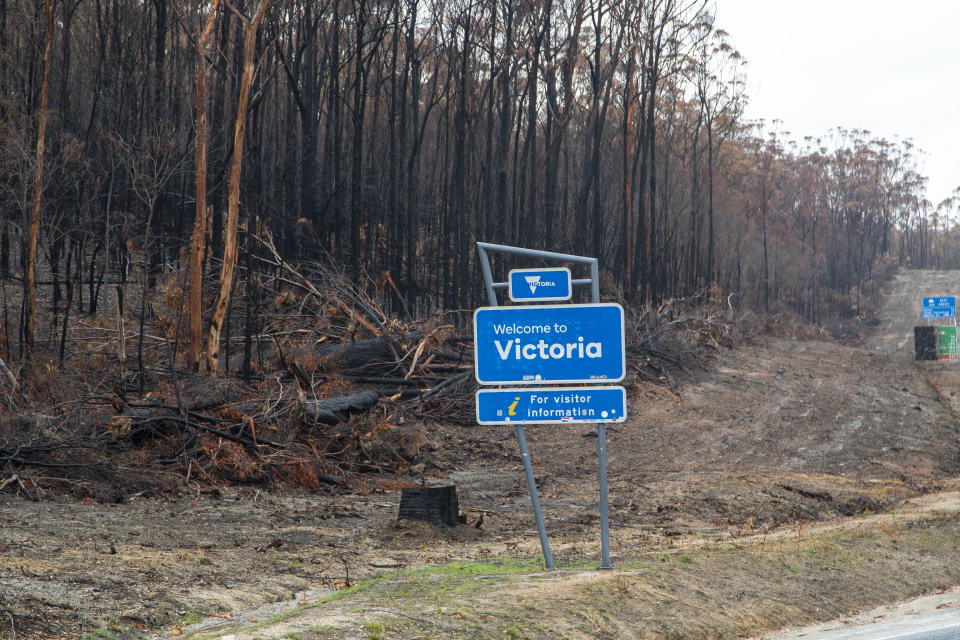
The figures give an insight into the government’s response to the unprecedented “mega-fires” which claimed the lives of 3 billion native animals across the country and led to a remarkable outpouring of donations to help.
According to the Animal Justice Party’s Andy Meddick, despite the “wonderful work” by triage units treating these animals, the wider government response was an “abject failure”.
He believes that a higher number of animals could have been treated by veterinary teams if trained volunteers had been allowed to enter the fire zones earlier.
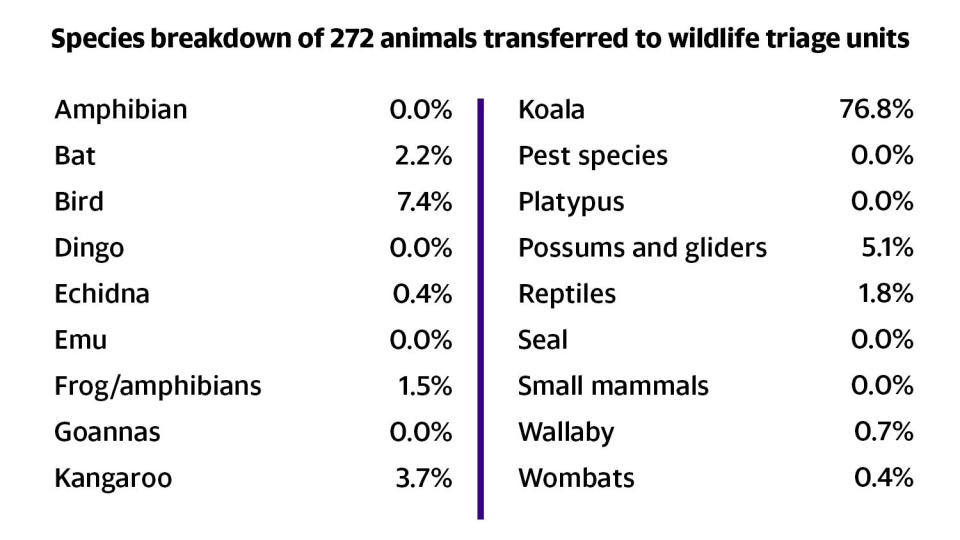
"The numbers are ridiculous,” Mr Meddick told Yahoo News Australia.
“There's no doubt that they would have been multiplied a hundredfold, a thousandfold, who knows, if we'd been able to get rescuers out into those areas, and bring those animals back.
"That's the most horrifying thing for me and for the sector here in Victoria is how many animals died... just because they couldn't get access to treatment?"
Wildlife carers ‘angry’ at government response
Wildlife Victoria’s CEO Dr Megan Davidson told Yahoo News Australia that the Black Summer fires were particularly intense, with the scorching flames and thick smoke in some cases leaving few animal survivors.
“Having flown over soon after the fires, I could see myself that there was nothing,” she told Yahoo News Australia.
“Even the very ground itself looked like it had been nuked, it was like everything had been sterilised.”
Along with Mr Meddick, she also cites a “lack of boots on the ground” as another significant factor in terms of the low number of animals treated.
The rescue teams allowed to enter the fire grounds in the days and weeks following the bushfires were largely made up of DELWP and National Parks employees.
They assessed animals in Budj Bim, Corryong, and regions around Bairnsdale, Orbost, Mallacoota, Omeo and Gelantipy, with the triage teams stationed in Corryong, Bairnsdale and Mallacoota.
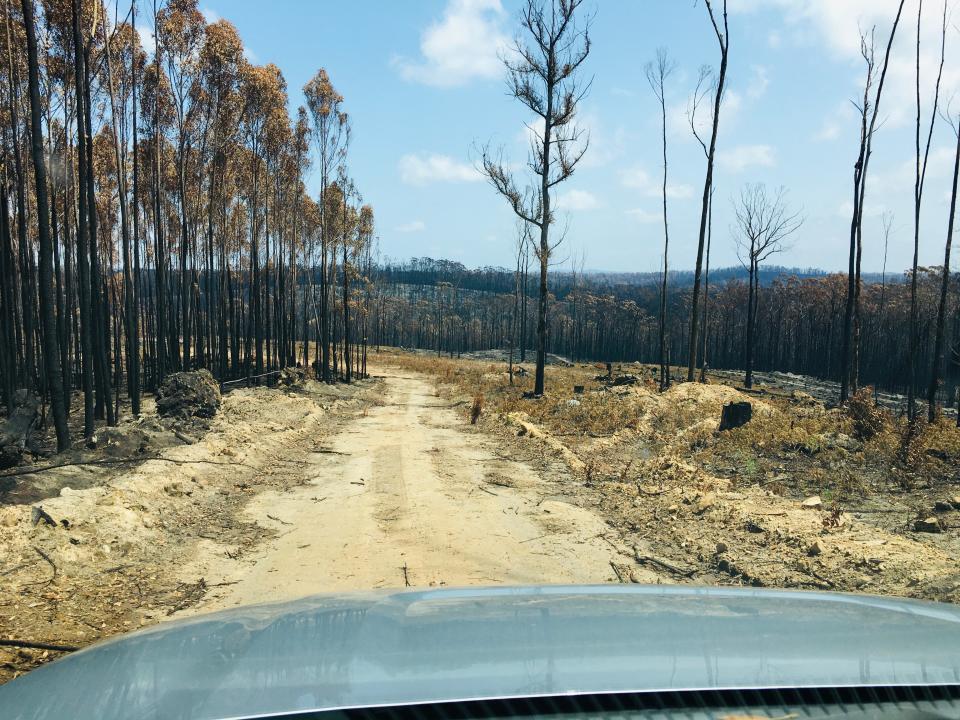
Unlike in other states, wildlife carers across Victoria allege they were largely excluded from entering burnt out areas.
Some say they were prevented from assisting despite having completed fire training courses in 2018 and receiving government grants to purchase protective equipment.
One team turned away from assisting was a group from Wildlife Victoria that included a vet and qualified rescuers.
Veteran kangaroo carer Manfred Zabinskas told Yahoo News Australia that even with his 30 years of experience in fire ground rescue, in recent years he has been prevented in assisting in bushfire recovery.
Unable to access state and national parks, he has been restricted to attending callouts to help wildlife on private land when concerned farmers called for help.
“What I’m feeling is beyond frustration, I’m actually angry,” Mr Zabinskas said.
“[I’m] completely pessimistic with the potential of ever working with DELWP again.”
High levels of disapproval of bushfire response
A document seen by Yahoo News Australia shows a state government commissioned survey of 131 people working with wildlife was largely critical of the government’s handling of the response.
More than 54 per cent of those surveyed said they believed the state’s management of the wildlife response was “not at all effective”, with a further 20 per cent saying it was “not so effective”.
In stark contrast, just 1.53 per cent of respondents thought “extremely effective”, while five per cent said it was “very effective”.
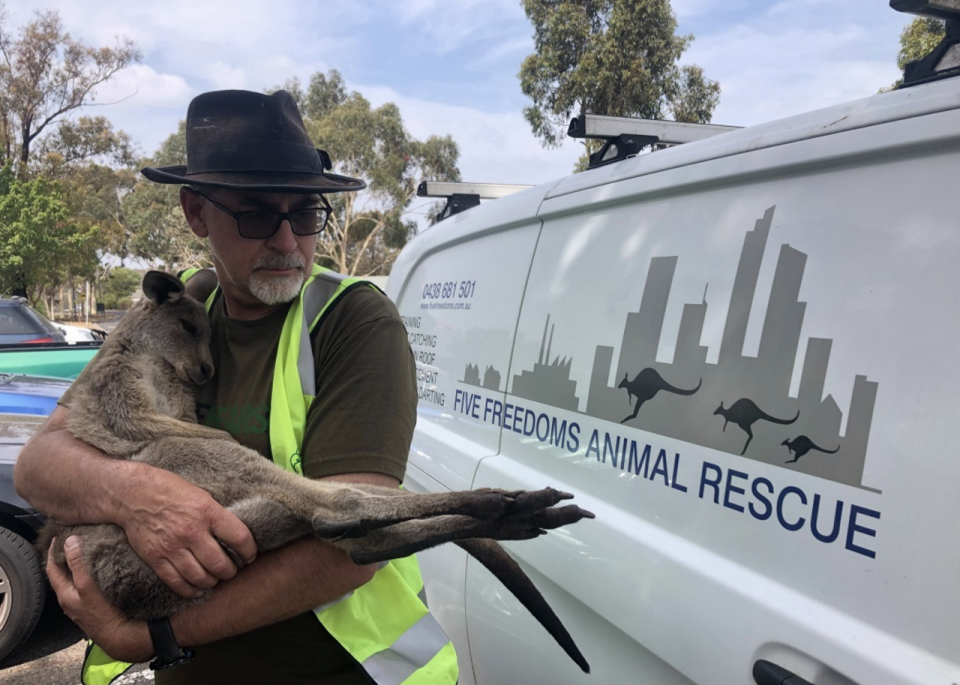
DELWP declined a request for an interview to discuss the concerns of wildlife rescue volunteers raised with Yahoo News Australia, but issued a statement.
“Access to fire grounds is determined by the Chief Fire Officer and is only allowed once the area is declared safe,” a department spokesperson said.
“This is to protect the safety of emergency services officers and anyone else seeking access to the fire ground. Fire grounds are dangerous, even after the fire front has passed.
“During the 2019/20 bushfires, our trained wildlife officers were deployed on the fire ground to lead accredited volunteers to help with the assessment of wildlife as soon as it was deemed safe to do so.”
Minister working for ‘best possible outcomes’ for wildlife
In the aftermath of the bushfires, the government has made an effort to work with the wildlife welfare sector, setting up a series of round-table discussions to deliver improved outcomes for native animals.
Victorian environment minister Lily D’Ambrosio declined to be interviewed by Yahoo News Australia about the progress of these meetings, but instead issued a statement last week.
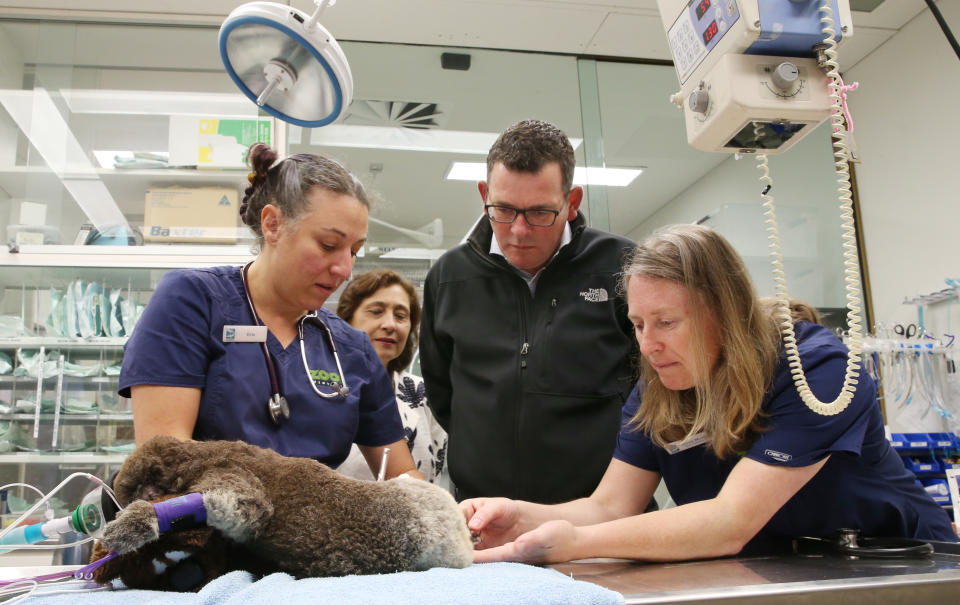
“The round-table is an opportunity for stakeholders to share experiences and what was learned from the 2019/20 summer bushfires and work together into the future,” the Minister said.
“This group now has broad agreement to work together on a plan for this bushfire season and beyond.
“The aim is to secure the best possible outcomes for Victoria’s wildlife impacted by bushfire.”
The ‘animals that never came’
After the initial July round-table, a number of participants spoke to Yahoo News Australia on condition of anonymity saying they welcomed government efforts to engage with them, but months later some now fear the practical response will be too slow.
Believing the utilisation of trained volunteers will save more animals in future fire seasons, the Animal Justice Party’s lone representative in the Victorian legislative council introduced a private members bill to amend the state’s 1975 wildlife act in June.
The bill received support in principal from the government and Mr Meddick believes ongoing talks could pave the way for the establishment of a new authority that would centralise the response to animal rescue during disasters, utilising the skills of wildlife volunteers.
The model would create a volunteer service similar to the SES or the volunteer fire service and include mental health support to help those dealing with the confronting work of caring for dying animals.
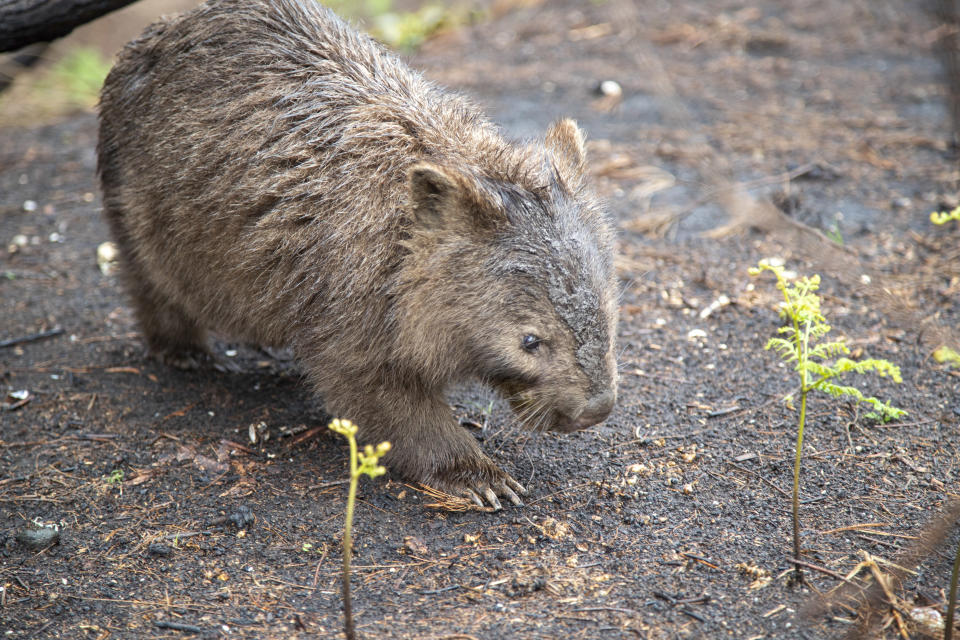
Marred by what Mr Meddick calls “a lack of respect” between DELWP and the wildlife carers, particularly from the former, he believes the experience of wildlife carers has not been utilised by the department during bushfire recovery.
“All of these volunteers who have been doing this work for all of these years were deliberately excluded from going in and rescuing,” he said.
“They sat on the sides ready to go with an enormous number of resources.
“The public donated food, they donated blankets, they donated everything needed, medicine in enormous quantities, sewn up pouches for joeys.
“Registered, recognised and accredited [tranquilliser] darters along with veterinarians were ready to go into the fire grounds and sedate and triage animals and get them to shelters.
“The shelters were willing and ready for an influx of animals that never came. They just never came.”
Rescue numbers across other affected states unclear
The majority of last season’s bushfires occurred in pockets of Victoria, NSW and Queensland, however the other two states did not provide a breakdown of animals treated, making a direct comparison with Victoria’s outcome impossible.
The NSW department of environment explained they could not provide wildlife data specific to the fires, and directed Yahoo News Australia to the state’s largest wildlife rescue group, WIRES for information.
WIRES said when compared to the previous season, they had a 15 per cent increase in calls for assistance between September 2019 and March 2020.
Between January and March 2020, WIRES volunteers reported facilitating over 9,500 rescues, attributing the cause to a combination of drought, bushfires, injury, displacement, as well as call outs to help orphaned animals.
The Queensland department of environment did not answer questions about wildlife treatment as a whole, but highlighted their response to affected koalas in the south-east of the state.
In Victoria, the numbers of animals treated across the state by individual volunteers once they were permitted access to the fire grounds is also unknown.
Will there be changes as fire season begins again?
Global interest in Australia’s wildlife has probably never been higher in recorded history, but its future has never looked so bleak, and the divide between government and wildlife advocates is in many cases polarised.
While rescue groups have reported a spike in call-outs to assist injured animals due to increased public awareness, other likely causes include a sustained destruction of habitat for logging and development.

Campaigners in Victoria are fighting a government approved slaughter of a local mob of kangaroos in the suburb of Lilydale to make way for housing.
In NSW, koala habitat has been designated for destruction to make way for a mine expansion, despite a parliamentary inquiry warning the species faces extinction across the state. The final decision is in the hands of the federal government.
Federally, many environmental advocates are concerned about the fate of our threatened species, criticising the federal government for introducing legislation to devolve the last line of protection to the states, while not putting in place recommended safeguards.
'Smoke and loud bangs': Endangered bats at risk as relocations go ahead
'Something’s going to give': Platypus staring down the barrel of extinction
Devastated residents dread cull of beloved kangaroos living amongst them
The battle to stop the horrific fate awaiting orphaned joeys
As summer approaches, the effect on threatened species following last year’s bushfires is still largely unknown.
While newspaper headlines are now largely dominated by the coronavirus, readers will soon likely turn their eyes to the bushfires once more.
Many Australians will be watching to see what lessons have been learnt by authorities when wildlife once again is placed in need of urgent help.
The author, Michael Dahlstrom, is registered as a wildlife carer in NSW.
Do you have a story tip? Email: newsroomau@yahoonews.com.
You can also follow us on Facebook, Instagram and Twitter and download the Yahoo News app from the App Store or Google Play.




